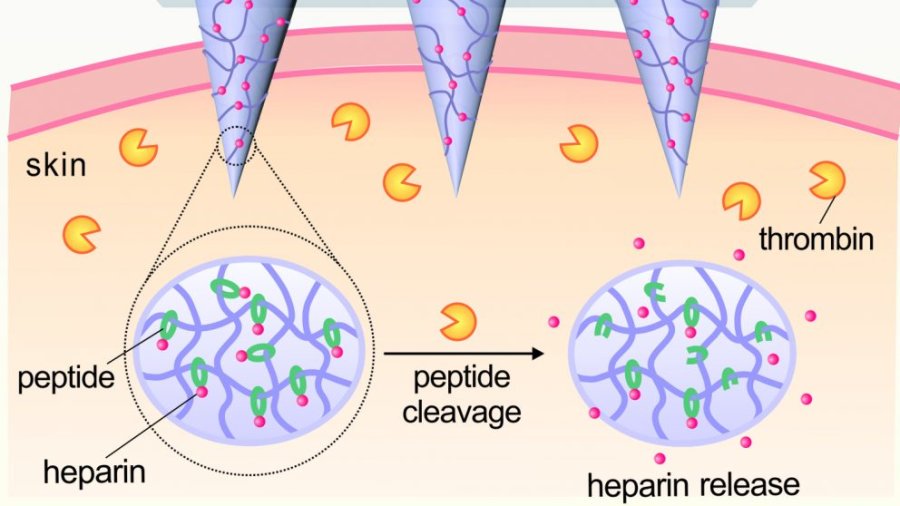UNC and NC State researchers have developed a promising, self-regulating, Heparin releasing patch, meant to optimize levels of the blood thinner in one’s body. It has only been tested on animals, but was found to be more effective at preventing thrombosis than traditional drug delivery methods.
Current protocol requires regular blood testing, to prevent hemorrhaging from a too-high dose, or, of course, thrombosis from an inadequate one.
The patch uses microneedles made of a polymer that consists of hyaluronic acid and Heparin. It responds to thrombin, an enzyme that initiates blood clotting. When elevated thrombin levels come into contact with a microneedle, the enzymes break the amino acid chains that bind the Heparin to the HA, releasing the Heparin into the blood stream.
ApplySci’s 6th Wearable Tech + Digital Health + NeuroTech Silicon Valley – February 7-8 2017 @ Stanford | Featuring: Vinod Khosla – Tom Insel – Zhenan Bao – Phillip Alvelda – Nathan Intrator – John Rogers – Roozbeh Ghaffari –Tarun Wadhwa – Eythor Bender – Unity Stoakes – Mounir Zok – Krishna Shenoy – Karl Deisseroth – Shahin Farshchi – Casper de Clercq – Mary Lou Jepsen – Vivek Wadhwa – Dirk Schapeler – Miguel Nicolelis
